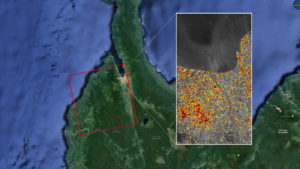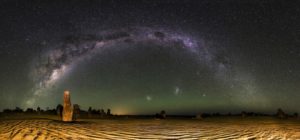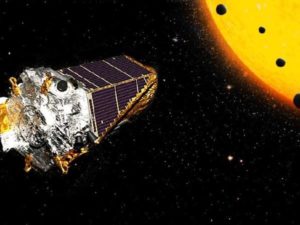RIK-210-Sebastian-GABORIT..jpg" />
A view of the Milky May, the galaxy Earth’s sun shares with RIK-210 – Sebastian Gaborit.
Houston, 26 Rabiul Awwal 1438/26 December 2016 (MINA) – The light of a nearby star is dimming, leaving astrophysicists reaching for an unorthodox explanation.
Also Read: US Calls for Action to Halt Weapons Flow to Sudan’s RSF
It is not the only heavenly body discovered to be displaying the unusual phenomenon in recent months, with a previous instance of the dimming pattern being speculatively blamed on an ‘alien megastructure’.
As a general rule, light dimming behaviour indicates that a planet or other smaller body is orbiting a star. But just as was the case with ‘Tabby’s star’, there is no significant body in transit around the star RIK-210.
Astronomer Jason Wright suggested Tabby’s star, which is formally known as KIC 8462852 could be dimmed by a “swarm of megastructures”.
Last year, he told The Independent: “I can’t figure this thing out and that’s why it’s so interesting, so cool – it just doesn’t seem to make sense.”
A cloud in the magnetosphere is really the cause?
Also Read: Paul Pogba and Hakim Ziyech Among Athletes Urging UEFA to Boycott Israel
In RIK-210’s case, though, there’s no talk of an ‘alien megastructure’. Instead, the research paper tentatively concludes the most likely explanation is a cloud of particles trapped by the star’s magnetic field.
In intergalactic terms, RIK-210 is located relatively nearby, at around 472 light-years from Earth. That’s more than four quadrillion kilometers away, but the Milky Way alone spans more than 100,000 light-years.
Observation is difficult at this distance, and the research team which published the paper is still unsure as to whether a cloud in the magnetosphere is really the cause.
Their analysis has put other explanations off the table. There’s no second star orbiting it in a binary system, and nor is there a brown dwarf – a substellar object larger than a Jupiter-style gas giant but smaller than a star. Nor does the young star have any orbiting planets, or a ‘protoplanetary disc’ of debris.
Also Read: Sudan Reaffirms Partnership with WFP Despite Expulsion of Officials
Further testing will be needed to confirm that a cloud within the magnetosphere definitely is the cause. There are still big questions to be answered: a magnetically trapped cloud is seen as a likely explanation because it would rotate at the same speed as the star, but they cannot “readily account for the sub-percent dimmings seen elsewhere in the light curve that are not in phase with the stellar rotation.”
The jury is still out on Tabby’s star, which is being investigated under NASA’s Search for Extra-Terrestrial Intelligence budget. Like RIK-210, light is being blocked by a still-unknown body of material around the star. It could, perhaps, be a Dyson sphere, a megastructure placed around a star by alien entities to extract its energy.
The RIK-210 paper is waiting to be peer-reviewed before formal publication, but you can read it online here. (T/RS05/RS01)
Mi’raj Islamic News Agency (MINA)
Also Read: Türkiye Urges Israel to Match Hamas’ Constructive Steps Toward Permanent Gaza Ceasefire


































 Mina Indonesia
Mina Indonesia Mina Arabic
Mina Arabic